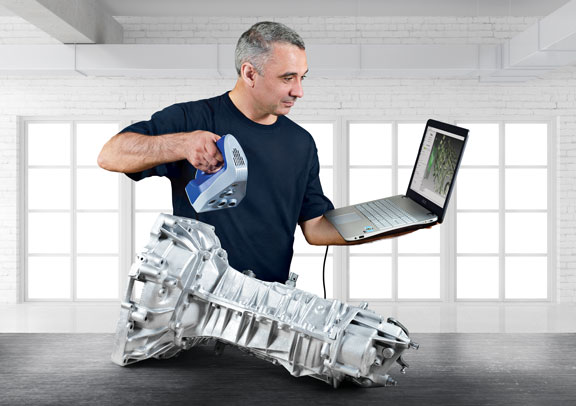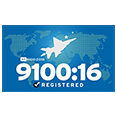
3D scanning tools are used in a variety of applications across industrial settings. The choice between different scanning tools all comes down to choosing the appropriate scale. Scanning applications require either short, medium, or long-range abilities. While most projects and applications will require only one type of range, some will have overlapping needs. In those cases, a comprehensive digital image can be created using various scanning technologies, all of which are available through Exact Metrology. Below, we explore the three different 3D scanning tool range categories in more depth for a better understanding of how they are each used in industrial settings.
Long Range Scanning
Long range scanning tools are designed to cover the broadest spectrum when capturing data. This category covers everything from LiDar (Light Detection and Radar) technology to portable hardware more commonly used in industrial plants and environmental scans. LiDar is capable of scanning large territories while attached to the bottom of a plane. And compact hardware, terrestrial 3D scanners can be moved and placed similarly to traditional surveyor transits. However, these 3D scanning tools have the added benefit of capturing location positionally through GPS and a volumetric 3D scan of the environment. These are able to capture close to 2 million points per second at a range of over 100 meters, all while capturing environmental image data and mapping it into 3D data.
All of this data is valuable for a variety of industrial setting purposes, one being laying out the interior of a new factory. Long-range scanning tools can be used to scan the interior of an empty building, thereby creating a digital volume that can be used to confirm the proper placement of things like plumbing and electrical wiring.
Another example of how long-range scanners can be used is the capturing of a true environment for the purposes of determining a critical path or retrofitting. The 3D scanners can capture data from an existing environment, such as a nuclear plant, focusing on determining obstructions and impediments that might hinder component replacement. This application allows for the plant’s continued operation during the digital mapping process.
Medium Range Scanning
The next category of 3D scanning tools is those that have medium-range scanning capabilities. These can actually be used alongside long-range scanners. These scanners can be used to capture information about the construction of industrial equipment, such as molding presses and printing machines. Medium-range scanning can map out the equipment, including electrical hookups, maintenance functionality, and its relationship to other tools and equipment.
These are capabilities far beyond what a visual assessment or blueprint, which generally includes various design fail points, can offer. A 3D scan of a molding press, for example, allows for the development of a robotic cell that can confirm clearances and working volume. Essentially, the scan allows for knowledge of the item’s actual geometry, which can greatly help engineers to design a usable and safe setup and minimize the need for rework.
An additional benefit of medium-range scanners is their ability to leverage both larger and shorter-range volumes, making them a perfect intermediate choice that covers the needs of many scanning applications.
Short Range Scanning
The third category of 3D scanning ranges, short range, has some similarities to medium-range scanning tools. The wide range covered by short-range scanners is pretty impressive, extending from something as small as the stent that fits in a blood vessel to the exterior of a VW Beetle. However, short-range scanners are known for their higher precision requirements for defining parts accurately and with higher detail.
One way in which short-range scanning tools are used in industrial settings is for the capturing of data at the component level. For example, when employing a robotic system to choose parts from a molding press, true part size and shape must be known and properly cataloged. This data can be used to design a custom fixture for securely retrieving or holding parts from the molding press. Further, component parts can be evaluated with CT/X-ray scan data that shows the parts’ internal structures, including porosity and occlusion at nearly a microscopic level.
Exact Metrology Has All Ranges Of 3D Scanning Tools
Exact Metrology has all of the 3D scanning tools you need to meet your industrial scanning needs, no matter what range. Additionally, for any scanning equipment you choose, we also offer 3D scanning training to help you and your team get up to speed on how to get the most out of your purchase. If you are ready to find out more about the various uses of 3D technology in various industries, be sure to read our piece on 3D scanning in industrial settings.





